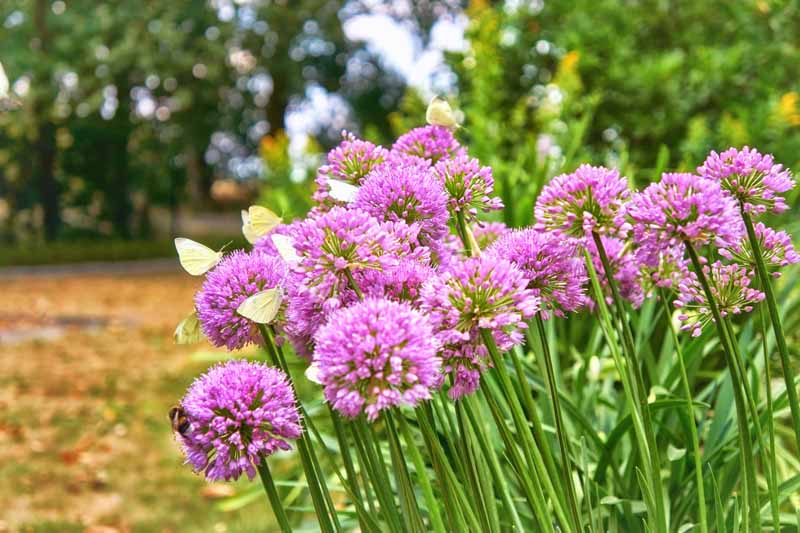Magnificent Agapanthus: Enhancing Your Yard's Elegance
Letting Loose the Secret to Effective Agapanthus Growing: Idea for a Flourishing Yard
In the world of horticulture, cultivating agapanthus effectively needs a calculated method that includes different elements of plant treatment. By comprehending the nuances of agapanthus cultivation, one can create a setting where these plants thrive and flower perfectly.
Growing Agapanthus: Ideal Practices
When growing Agapanthus, proper dirt prep work is vital for guaranteeing successful growth and advancement of these beautiful blossoms. Agapanthus, frequently called Lily of the Nile or African lily, flourishes in well-draining soil with a somewhat acidic to neutral pH degree - Agapanthus. Before planting, it is critical to modify hefty clay soils with natural issue such as garden compost or peat moss to improve drainage and provide important nutrients for the plants
To grow Agapanthus, pick a location that receives complete sunlight to partial shade, as this will advertise healthy development and abundant flowering. Dig a hole twice the diameter of the plant's origin sphere and place the Agapanthus at the exact same depth it was formerly expanding. Delicately backfill the opening with dirt, pushing down securely to eliminate any air pockets around the roots.
Water the newly grown Agapanthus completely and remain to maintain the soil evenly wet, particularly throughout the plant's active growing period. Agapanthus. Using a balanced plant food once a month can better support the plant's growth and blooming. By complying with these best techniques for planting Agapanthus, you can develop a sensational display screen of these exciting blossoms in your garden
Perfect Soil Issues for Agapanthus
For optimum development and growing success of Agapanthus plants, guaranteeing the soil conditions are optimal is vital. Agapanthus likes dirt that is abundant in nutrients, so integrating a balanced plant food throughout the expanding season can advertise healthy and balanced development and dynamic flowers.

Watering and Fertilizing Tips
To make sure healthy development and vivid blossoms, proper watering and fertilizing techniques are crucial for successful Agapanthus cultivation. Agapanthus plants profit from normal watering, especially throughout the expanding season.
When it pertains to fertilizing Agapanthus, a balanced plant food with equal parts nitrogen, phosphorus, and potassium can be used in the springtime to promote healthy growth and blooming. Slow-release fertilizers are suitable for giving nutrients gradually over a prolonged duration. Avoid over-fertilizing, as this can bring about too much vegetation growth at the expense of flowers.
Additionally, incorporating natural matter like garden compost into the soil can boost nutrient levels and improve soil framework, aiding in the general health of the Agapanthus plants. By adhering to these watering and fertilizing pointers, garden enthusiasts can ensure their Agapanthus plants thrive and create spectacular display screens of blossoms.
Trimming and Deadheading Strategies
Correct trimming and deadheading strategies play an important duty in keeping the health and visual appeals of Agapanthus plants, matching the essential methods of watering and feeding for effective growing. Pruning Agapanthus includes removing invested flower heads, yellowing or dead fallen leaves, and total shaping of the plant to promote better growth. Deadheading, the procedure of getting rid of discolored flowers, not just boosts the plant's appearance yet also encourages additional flowering.
When deadheading Agapanthus, it is advisable to trim off the flower stem at the base using sharp, clean shears. This process redirects the plant's energy from seed production back right into origin and foliage development, advertising a healthier and a lot more durable plant. Regular deadheading can expand the growing duration of Agapanthus and avoid self-seeding, which can cause overcrowding.
In terms of trimming, Agapanthus usually gain from a light trim after blossoming to clean the plant and encourage fresh growth. Cutting back the invested blossom stems and removing any dead or damaged foliage aids preserve the plant's vitality and general look. Nevertheless, it is necessary to avoid cutting right into the crown of the plant, as this can damage its health and wellness.

Protecting Agapanthus From Vermins and Diseases
Implementing efficient parasite and disease monitoring strategies is important to guarding the health and wellness and vigor of Agapanthus plants in cultivation. One typical bug that influences Agapanthus is the Agapanthus borer, a caterpillar that tunnels into the plant, triggering damages to the fallen leaves and blossoms.
In addition to pests, Agapanthus are at risk to conditions such as you could look here root rot and fungal leaf spots. By remaining cautious and addressing pest and disease issues promptly, gardeners can help their Agapanthus prosper and grow.
Conclusion
Finally, effective farming of agapanthus requires appropriate growing techniques, ideal dirt problems, adequate watering and fertilizing, routine pruning and deadheading, and defense from conditions and insects. By adhering to these techniques and ideas, gardeners can make certain a flourishing garden full of stunning agapanthus blossoms. Agapanthus. Bear in mind to maintain consistent treatment and attention to detail to promote the health and wellness and longevity of these sensational plants
When planting Agapanthus, proper soil prep work is crucial for making sure effective development and development of these stunning blossoms.Water the newly planted Agapanthus completely and proceed to keep the soil uniformly damp, specifically during the plant's active growing season.For optimal growth and flowering success of Agapanthus plants, guaranteeing the dirt problems are excellent is crucial. When hair transplanting or growing Agapanthus, ensure the soil is well-prepared to offer the needed foundation for the plants to establish themselves successfully. why not try here One common insect that affects Agapanthus is the Agapanthus borer, a caterpillar that passages right into the plant, creating damage you can look here to the flowers and leaves.